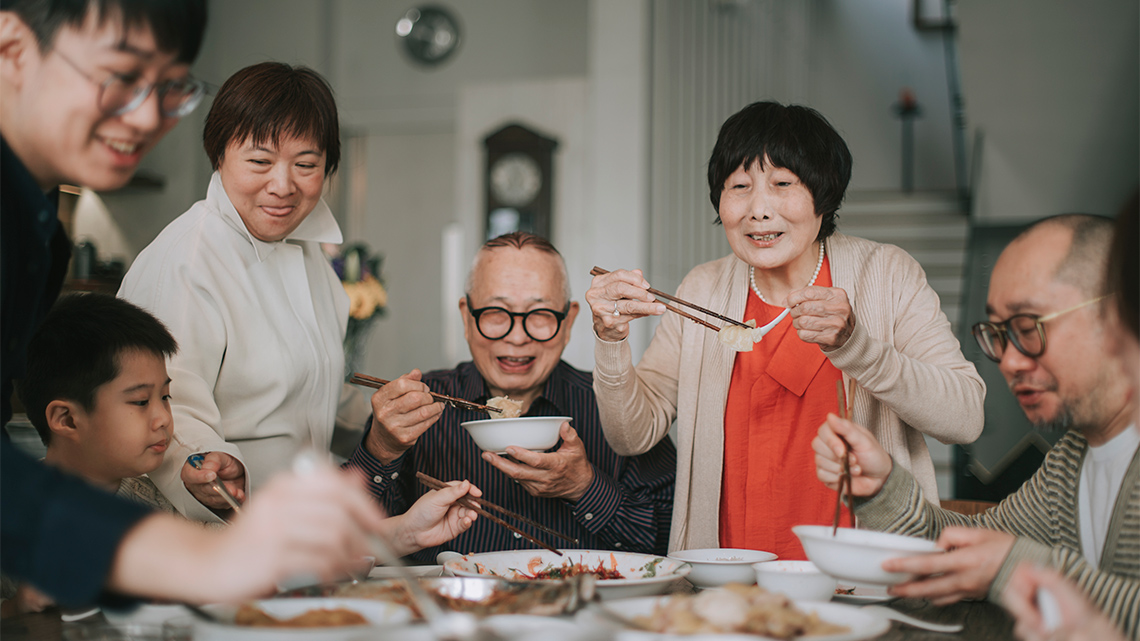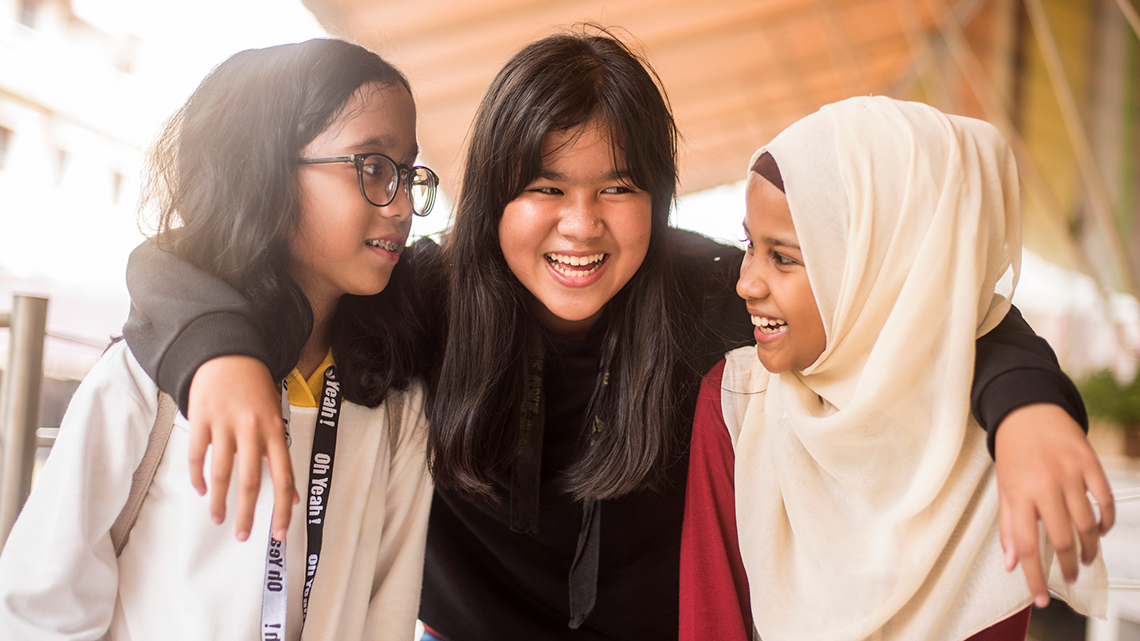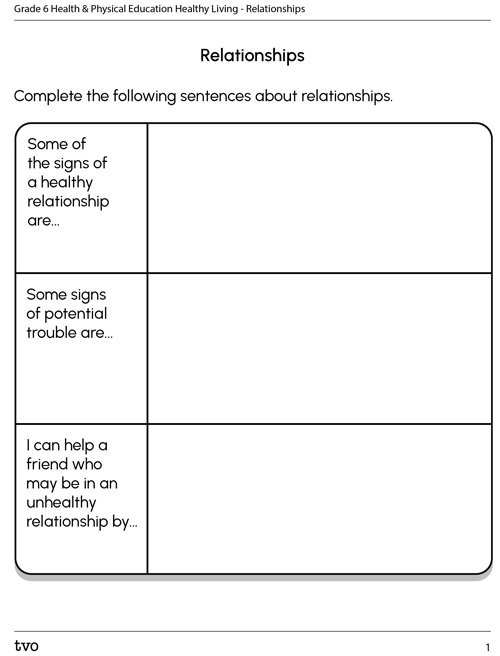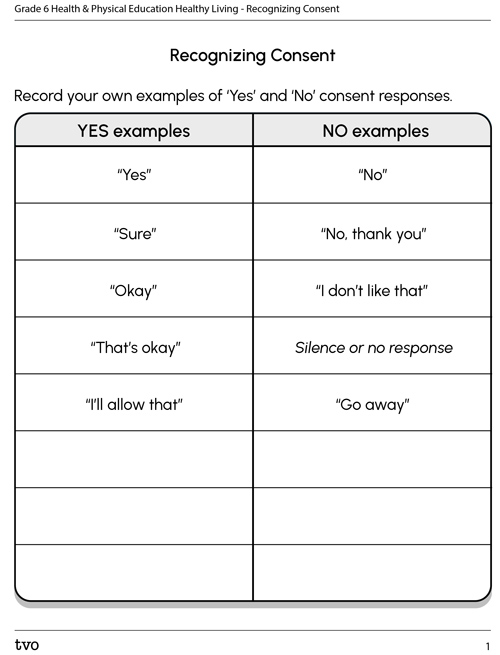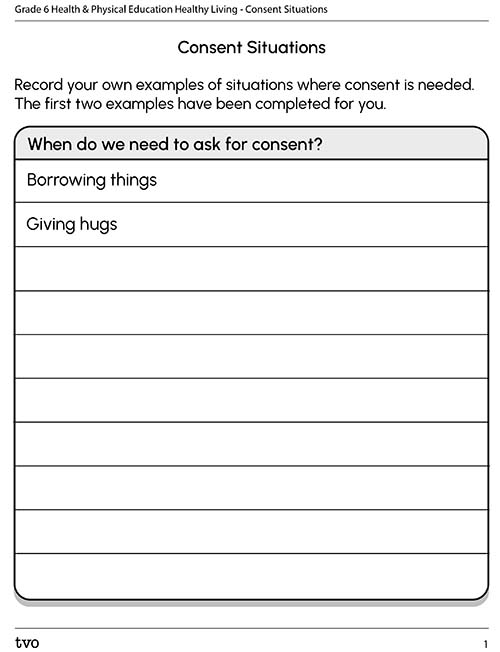Minds On
Our relationships
During our lifetime, we will have many different kinds of relationships. Some may be healthy relationships and some may be unhealthy.
Consider the following images of relationships.
Pause and Reflect
Pause and reflect
What do the relationships in the images have in common? What are the differences?
Record your thinking digitally, orally or in print.
Action
Circle of control
In relationships, there are things that we can control, and things that we can’t control.
Explore the following graphic. This graphic lists some of the things that we can’t control in our relationships. There is space in the inner circle to fill out things that we can control.
Your task is to think of at least 5 things we can control in our relationships and complete the chart. For example, we can control the decisions and choices we make. You can use the following fillable and printable Circle of Control document to make your list. You can also create your list using another method of your choice.

A graphic titled “Circle of Control.” There is a circle in the middle with space for things we can control. Outside the circle there are a few things we can’t control. The things we can’t control are: how people feel, actions of others, how people behave, words people speak, and what people think.
When you’re ready, you can press the ‘Answers’ button to reveal some possible answers to the Circle of Control activity.

A graphic titled “Circle of Control.” There is a circle in the middle with space for things we can control. Some of the things we can control are: thinking before I speak, loving myself and others, acting with kindness and respect, and listening carefully. Outside the circle there are a few things we can’t control. The things we can’t control are: how people feel, actions of others, how people behave, words people speak, and what people think.
Pause and Reflect
Pause and reflect
How does knowing yourself help you to make good decisions in your relationships?
Record your thoughts using a method of your choice.
Know yourself

Let’s explore some important definitions. Press each word to learn its definition.
Being clear about your own values, priorities, strengths, boundaries, and needs can help you separate what is important to you from what is not.
Knowing yourself well can help you recognize what you need to work on to make your relationships with others better.
Pause and Reflect
Pause and reflect
In our relationships with others, it is important to:
- be respectful but clear about your ideas and feelings
- listen actively to what is being said
- interpret body language, tone of voice, and facial expressions
- respect signals of agreement or disagreement
Healthy or unhealthy?
Our relationships with others can be healthy or unhealthy. We are going to explore what this means with an activity.
Consider each of the following statements about relationships. Determine if the relationships being described are healthy or unhealthy.

In a healthy relationship, people show respect and care for each other. They try to communicate well and are honest with each other.
When someone in a relationship is jealous, controlling, or abusive, or does anything that makes the other person feel uncomfortable, that is a sign of trouble. Sometimes a relationship can start out as healthy but then become unhealthy.
It is important to recognize that relationships online or in the media are not always accurate and can send false messages. Relationships aren’t perfect and require effort and compromise to stay healthy.
Pause and Reflect
Pause and reflect
Complete the following sentences about relationships.
- Some of the signs of a healthy relationship are…
- Some signs of potential trouble are…
- I can help a friend who may be in an unhealthy relationship by…
You can record your thoughts in the following fillable and printable Relationships document. You may also use another method of your choice.
All about consent

What does it mean to give consent?
Press the ‘Consent’ button to find out what this word means.
Consent means to give permission for something to happen.
We need to be respectful of each other and recognize the difference between saying ‘yes’ to something and saying ‘no.’
A clear, specific, and enthusiastic ‘yes’ that is given freely is a way of giving consent.
A response of ‘no,’ an uncertain response, or silence needs to be understood as no consent.
It is important to know that a person can change their mind and say no at any time to something that they said yes to before.
Recognizing consent
When asking for consent, it is important to be clear about what is a ‘yes’ and what is a ‘no.’ The following chart gives examples of each.
|
Consent |
|
|
YES examples |
NO examples |
|
“Yes” |
“No” |
|
“Sure” |
“No, thank you” |
|
“Okay” |
“I don’t like that” |
|
“That’s okay” |
Silence or no response |
|
“I’ll allow that” |
“Go away” |
Consider the list of ‘Yes’ and ‘No’ examples and think of your own examples.
You can record your examples in the following fillable and printable Recognizing Consent document. You can also record your examples using another method of your choice.
When do we need consent?
When do you feel it is important to ask permission to do something?
Complete the following fillable and printable Consent Situations document. You will be adding your own examples of situations where consent is needed. The first two examples have been filled out for you.
You can also complete this activity using another method of your choice.
When you’re ready, press the ‘Answers’ button to reveal some possible answers to the Consent Situations activity.
|
When do we need to ask for consent? |
|---|
|
Borrowing things |
|
Giving hugs |
|
Touching another person |
|
Kissing |
|
Sharing secrets |
It is always a good idea to ask for permission from someone before we do something to make sure that they are comfortable with it.
Pause and Reflect
Pause and reflect
How can you send, receive, and interpret information in an effective way in a relationship?
Record your thoughts using a method of your choice.
Consolidation
Spread the word

Educating others is a key step in improving the quality of the relationships that people have at home, school, and out in social situations.
Using the knowledge you have acquired, create a message that will spread the word about positive relationships and the role of consent.
You may choose to deliver your message digitally, orally, in print, or in any format.
Reflection
As you read through these descriptions, which sentence best describes how you are feeling about your understanding of this learning activity? Press the button that is beside this sentence.
I feel…
Now, record your ideas using a voice recorder, speech-to-text, or writing tool.
